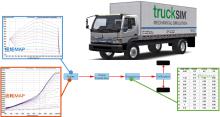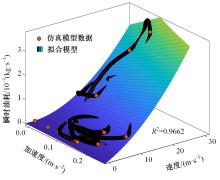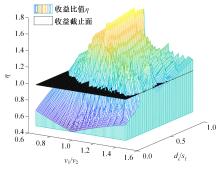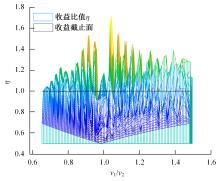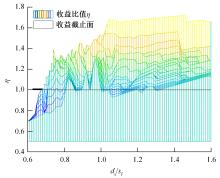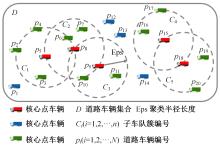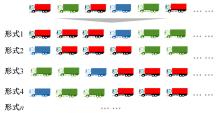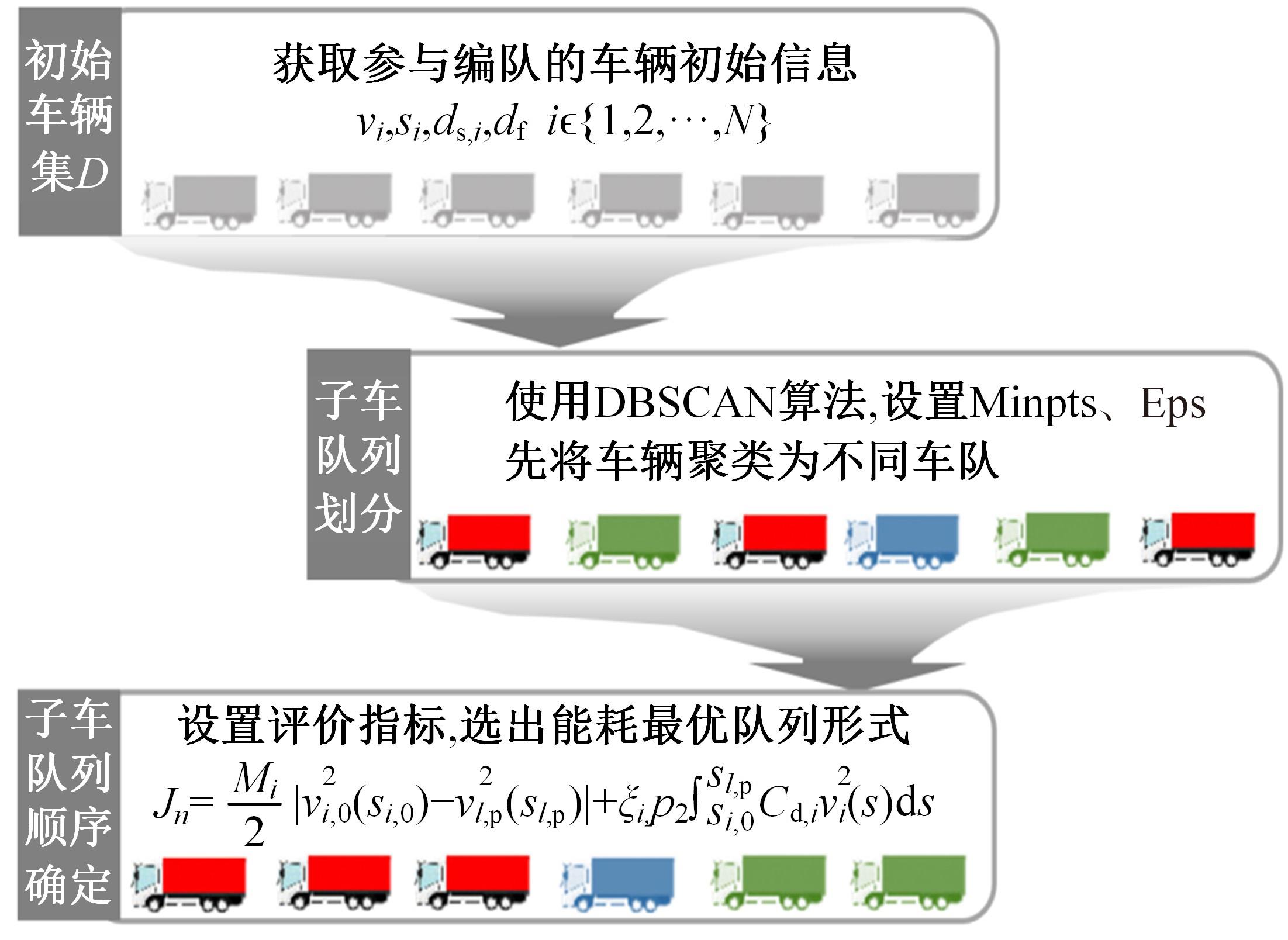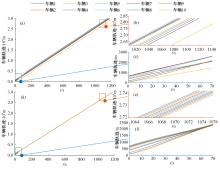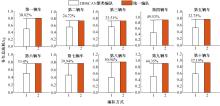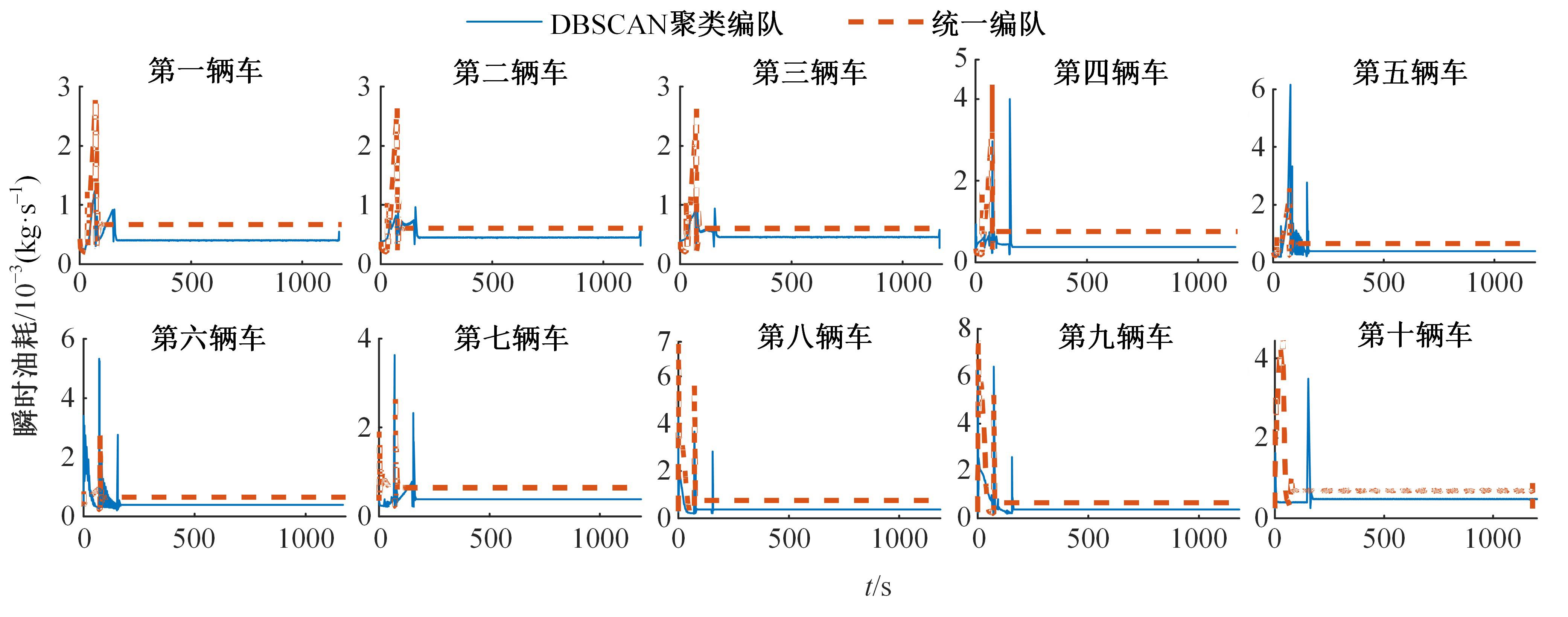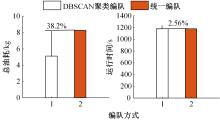Journal of Jilin University(Engineering and Technology Edition) ›› 2024, Vol. 54 ›› Issue (5): 1459-1468.doi: 10.13229/j.cnki.jdxbgxb.20220733
Commercial vehicle formation strategy based on density clustering
Di LIU1,2( ),Yao SUN1(
),Yao SUN1( ),Yun-feng HU1,2,Hong CHEN3
),Yun-feng HU1,2,Hong CHEN3
- 1.National Key Laboratory of Automotive Chassis Integration and Bionics,Jilin University,Changchun 130022,China
2.College of Communication Engineering,Jilin University,Changchun 130022,China
3.College of Electronics and Information Engineering,Tongji University,Shanghai 201804,China
CLC Number:
- TP393.08
| 1 | Li Y F, Chen W B, Peeta S, et al. Platoon control of connected multi-vehicle systems under V2X communications: design and experiments[J]. IEEE Transactions on Intelligent Transportation Systems, 21(5): 1891-1902, 2020. |
| 2 | Liang K Y, Martensson J, Johansson K H. Heavy-duty vehicle platoon formation for fuel efficiency[J]. IEEE Transactions on Intelligent Transportation Systems, 17(4): 1051-1061, 2016. |
| 3 | Zheng Y N. Time-varying formation control for unmanned intelligent vehicle (UIV) with mobile reference center[C]∥2021 Asia-Pacific Conference on Image Processing, Electronics and Computers, Dalian, China, 2021: 1952-1960. |
| 4 | Jond H, Yildiz A. Connected and automated vehicle platoon formation control via differential games[J]. IET Intelligent Transport Systems, 17(2): 312-326, 2022. |
| 5 | Wang Peng, Chen Zi-yin, Zhang Xiao-bing, et al. Space-and-time-synchronized simultaneous vehicle tracking/formation using cascaded prescribed-time control[J]. International Journal of Robust and Nonlinear Control,2022, 32(4): 2380-2398. |
| 6 | Wei Shou-yang, Zou Yuan, Zhang Xu-dong, et al. An integrated longitudinal and lateral vehicle following control system with Radar and vehicle-to-vehicle communication[J]. IEEE Transactions on Vehicular Technology, 2019, 68(2): 1116-1127. |
| 7 | He Deng-feng, Qiu Tian-xiang, Luo Ren-shi. Fuel efficiency-oriented platooning control of connected nonlinear vehicles: a distributed economic MPC approach[J]. Asian Journal of Control, 2020,22(4): 1628-1638. |
| 8 | Mihaly A, Farkas Z, Gaspar P. Model predictive coordination of autonomous vehicles crossing intersections[C]∥ 21st IFAC World Congress, Berlin, Germany, 2020: 15174-15179. |
| 9 | 马 彦,黄健飞,赵海艳. 基于车间通信的车辆编队控制方法设计[J]. 吉林大学学报:工学版, 2020, 50(2): 711-718. |
| Ma Yan, Huang Jian-fei, Zhao Hai-yan. Method of vehicle formation control based on vehicle to vehicle communication[J]. Journal of Jilin University (Engineering and Technology Edition), 2020, 50(2): 711-718. | |
| 10 | Kianfar R, Falcone P, Fredriksson J. A control matching model predictive control approach to string stable vehicle platooning[J]. Control Engineering Practice, 2015,45(12): 163-173. |
| 11 | Wen Shi-xi, Guo Ge. Control of leader-following vehicle platoons with varied communication range[J]. IEEE Transactions on Intelligent Vehicles,2020, 5(2): 240-250. |
| 12 | Turri V, Besselink B, Johansson K H. Cooperative look-ahead control for fuel-efficient and safe heavy-duty vehicle platooning[J]. IEEE Transactions on Control Systems Technology, 2016, 25(1): 12-28. |
| 13 | Li Sheng-bo, Li Ren-jie, Wang Jian-qiang, et al. Stabilizing periodic control of automated vehicle platoon with minimized fuel consumption[J]. IEEE Transaction on Transportation Electrification, 2016, 3(1): 259-271. |
| 14 | 陈兴. 自主重型车队的油耗优化问题研究[D]. 大连:大连海事大学船舶电气工程学院, 2019. |
| Chen Xing.The optimization research for autonomous heavy-duty vehicle platoon's fuel consumption[D]. Dalian: College of Merine Electrical Engineering, Dalian Maritime University, 2019. | |
| 15 | Kamal M, Abdus S, Mukai M, et al. Model predictive control of vehicles on urban roads for improved fuel economy[J]. IEEE Transactions on Control Systems Technology, 2013,21(3): 831-841. |
| 16 | 宋大凤, 吴西涛, 曾小华, 等. 基于理论油耗模型的轻混重卡全生命周期成本分析[J]. 吉林大学学报:工学版, 2018,48(5): 1313-1323. |
| Song Da-feng, Wu Xi-tao, Zeng Xiao-hua, et al. Life cycle cost analysis of mild hybrid heavy truck based on theoretical fuel consumption model[J]. Journal of Jilin University (Engineering and Technology Edition), 2018,48(5): 1313-1323. | |
| 17 | Chen Hong, Guo Lu-lu, Ding Hai-tao, et al. Real time predictive cruise control for eco-driving taking into account traffic constraints[J]. IEEE Transactions on Intelligent Transportation Systems, 2019,20(8): 2858-2868 . |
| 18 | 李文杰, 闫世强, 蒋莹,等. 自适应确定DBSCAN算法参数的算法研究[J]. 计算机工程与应用, 2019, 55(5): 1-7. |
| Li Wen-jie, Yan Shi-qiang, Jiang Ying, et al. Research on method of self-adaptive determination of DBSCAN algorithm parameters[J]. Computer Engineering and Applications, 2019, 55(5): 1-7. | |
| 19 | 戴阳阳, 李朝锋, 徐华. 初始点优化与参数自适应的密度聚类算法[J]. 计算机工程, 2016, 42(1): 203-209. |
| Dai Yang-yang, Li Chao-feng, Xu Hua. Density clustering algorithm with initial point optimization and parameter self-adaption [J]. Computer Engineering, 2016, 42(1): 203-209. | |
| 20 | 夏鲁宁, 荆继武. SA-DBSCAN:一种自适应基于密度聚类算法[J]. 中国科学院大学学报, 2009, 26(4): 530-538. |
| Xia Lu-ning, Jing Ji-Wu. SA-DBSCAN:a self-adaptive density-based clustering algorithm [J]. Journal of the Graduate School of the Chinese Academy of Sciences, 2009, 26(4): 530-538. | |
| 21 | 胡云峰, 丁一桐, 赵志欣, 等. 柴油发动机燃烧过程数据驱动建模与滚动优化控制[J]. 吉林大学学报:工学版, 2021, 51(1): 49-62. |
| Hu Yun-feng, Ding Yi-tong, Zhao Zhi-xin, et al. Data-driven modeling and receding optimization control of diesel engine combustion process [J]. Journal of Jilin University (Engineering and Technology Edition), 2021, 51(1): 49-62. |
| [1] | Qian LIU,Zhu-xin ZHANG,Ding-xuan ZHAO,Li-xin WANG,Ya-fei WANG. A new electric servo actuator based on energy recovery and its dynamic energy consumption analysis [J]. Journal of Jilin University(Engineering and Technology Edition), 2024, 54(5): 1196-1204. |
| [2] | Bao-feng SUN,Jiao-jiao LIU,Tian-zi YAO,Xin-xin REN. Electric delivery vehicle routing problem with flexible time window integrated with energy consumption estimation [J]. Journal of Jilin University(Engineering and Technology Edition), 2023, 53(4): 1047-1059. |
| [3] | Zhen-jun XU,Rui-feng ZHANG,Jia-xiang CHEN,Xiao-hui ZHANG,Xiao-guang MI,Jie CHEN,Lin CHEN. Influence for backheating on low temperature high mass experimental system [J]. Journal of Jilin University(Engineering and Technology Edition), 2023, 53(4): 1133-1138. |
| [4] | Ying HE,Jun-song FAN,Wei WANG,Geng SUN,Yan-heng LIU. Joint optimization of secure communication and trajectory planning in unmanned aerial vehicle air⁃to⁃ground [J]. Journal of Jilin University(Engineering and Technology Edition), 2023, 53(3): 913-922. |
| [5] | Bao-feng SUN,Tian-zi YAO,Yu-qi CHEN. Electric delivery vehicle routing problem optimization model with time⁃varying traffic congestion [J]. Journal of Jilin University(Engineering and Technology Edition), 2023, 53(2): 468-479. |
| [6] | Zheng ZHANG,Qi-dan ZHU,Xiao-long LYU,Xing FAN. Optimized method for solving inverse kinematics of redundant manipulator [J]. Journal of Jilin University(Engineering and Technology Edition), 2023, 53(12): 3379-3387. |
| [7] | Yi-min MAO,Sen-qing GU. Parallel density clustering algorithm based on MapReduce and optimized cuckoo algorithm [J]. Journal of Jilin University(Engineering and Technology Edition), 2023, 53(10): 2909-2916. |
| [8] | Jian-wu YU,Ya-ling CHEN,Guang-hui FAN,Shi-gang HU,You-yu BAO. Structural design and thermal dissipation performance analysis of liquid cooling plates with parallel flow channels for lithium batteries [J]. Journal of Jilin University(Engineering and Technology Edition), 2022, 52(12): 2788-2795. |
| [9] | Si-feng ZHU,Ming-yang ZHAO,Zheng-yi CHAI. Computing offloading scheme based on particle swarm optimization algorithm in edge computing scene [J]. Journal of Jilin University(Engineering and Technology Edition), 2022, 52(11): 2698-2705. |
| [10] | Wen-long TENG,Bing-hu CONG,Yun-kun SHANG,Yu-chen ZHANG,Tian BAI. Modeling of building energy consumption prediction based on MEA⁃BP neural network [J]. Journal of Jilin University(Engineering and Technology Edition), 2021, 51(5): 1857-1865. |
| [11] | QI Zi Shu, GAO Qing, LIU Yan, BAI Li. Model calculation and analysis of operation condition of heat pump using earth energy system for years [J]. 吉林大学学报(工学版), 2015, 45(6): 1811-1816. |
| [12] | DONG Bing,TIAN Yan-tao,ZHOU Chang-jiu. Fuzzy logic-based optimal control method for energy management of pure electric vehicle [J]. 吉林大学学报(工学版), 2015, 45(2): 516-525. |
| [13] | KUI Hai-lin, LAI Xiang-xiang, HUANG Chao-sheng, SHI Shu-ming, WANG Hai-zhou. EV calculation model of energy consumption based on velocity and acceleration distribution [J]. 吉林大学学报(工学版), 2014, 44(6): 1591-1595. |
| [14] | CHEN Tao, DENG Hui-fang, LIU Jing. Image categorization method using density clustering on region features and multi-instance learning [J]. 吉林大学学报(工学版), 2014, 44(4): 1126-1134. |
| [15] | CHANG Yu-chun, YU Zhao-jie, LI Jing, CAO Ling-jin, LI Qiang, DU Guo-tong. 11-bit 1-MS/s SAR ADC with a set-and-down switching procedure [J]. 吉林大学学报(工学版), 2013, 43(02): 480-484. |
|
||
